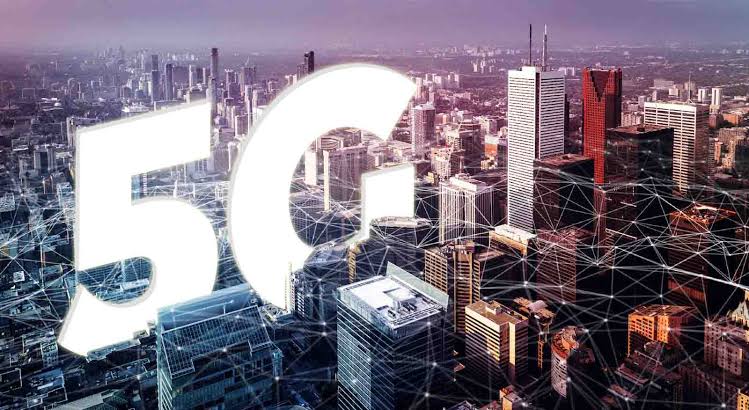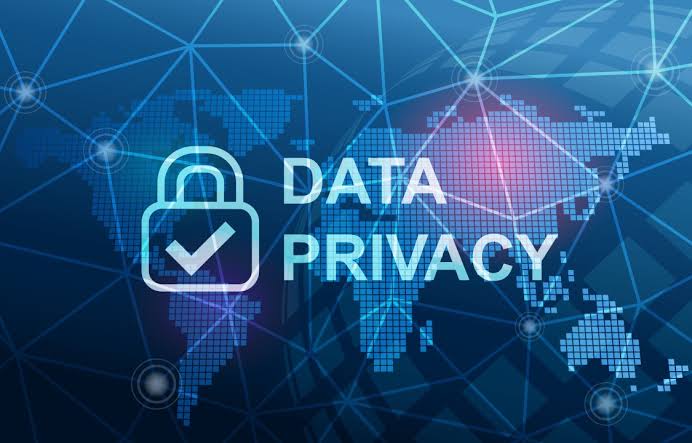
5G and Its Impact on Real-Time Business Communications
5G technology is revolutionizing real-time business communication by offering lightning-fast speeds, ultra-low latency, and robust network reliability. It empowers businesses with enhanced video conferencing, instant data access, and improved cloud performance. With better support for remote work, IoT devices, and customer service tools, 5G enables more efficient operations and faster decision-making.
✨ Raghav Jain

Introduction
In today’s digital era, fast and seamless communication is not just a luxury—it’s a necessity. As businesses around the globe continue to embrace digital transformation, real-time communication has emerged as a critical component of operational success. Whether it’s a virtual meeting, a live customer support chat, or a real-time data transfer between machines, the need for ultra-fast, low-latency connectivity is greater than ever.
Enter 5G, the fifth generation of wireless technology, which promises to revolutionize the way we connect, communicate, and conduct business. With lightning-fast speeds, ultra-low latency, and the ability to connect millions of devices simultaneously, 5G is set to redefine the landscape of business communication.
In this article, we will explore what 5G technology is, its core features, and most importantly, how it is transforming real-time communication in the business world. The advent of 5G technology, the fifth generation of cellular mobile communication, represents far more than just a marginal upgrade in network speed; it is a foundational paradigm shift poised to fundamentally redefine the landscape of real-time business communications, ushering in an era of unprecedented connectivity, responsiveness, and transformative operational capabilities. Unlike its predecessors, which primarily focused on incremental improvements in bandwidth, 5G is characterized by three revolutionary pillars: extremely high bandwidth (reaching multi-gigabit per second speeds), ultra-low latency (response times as low as 1 millisecond), and massive machine-type communication (connecting millions of devices per square kilometer). These interconnected capabilities coalesce to create a network infrastructure that is not just faster, but profoundly smarter and more responsive, directly addressing the critical demands of modern enterprises for instantaneous data exchange, seamless collaboration, and the effective deployment of cutting-edge technologies. The impact of 5G extends far beyond mere voice calls and traditional video conferencing, promising to reshape how businesses operate, interact with customers, manage supply chains, and foster internal collaboration, pushing the boundaries of what real-time communication can achieve. This new era of connectivity will unlock myriad opportunities for innovation across every sector, from manufacturing and healthcare to logistics and retail, driving efficiency, enabling new services, and creating competitive advantages for those who strategically embrace its potential.
One of the most immediate and profound impacts of 5G on real-time business communications is the radical enhancement of speed and bandwidth. With theoretical peak speeds up to 10 gigabits per second – 10 to 100 times faster than 4G LTE – and significantly higher average speeds, 5G virtually eliminates the frustrating bottlenecks that have plagued digital communication. This unprecedented bandwidth allows for the instantaneous transmission of massive data files, high-resolution video streams, and complex multimedia content without lag or degradation. For businesses, this translates into seamless, crystal-clear 4K or even 8K video conferencing that replicates in-person interactions, enabling truly effective remote collaboration globally. Large design files, intricate engineering schematics, or extensive datasets can be shared and iterated upon in real-time, accelerating product development cycles and decision-making processes. The reliance on sluggish internet connections or cumbersome file transfer protocols becomes a relic of the past, empowering distributed teams to work as if they were co-located. Furthermore, the ability to support multiple high-bandwidth applications simultaneously without performance degradation means that companies can run concurrent real-time analytics, augmented reality (AR) support sessions, and virtual reality (VR) training simulations without compromise, fostering a truly agile and responsive operational environment. This high-speed capability is not just about making existing communications faster; it enables entirely new forms of interactive and data-rich communication that were previously unimaginable.
Perhaps the most transformative aspect of 5G for real-time business communications is its ultra-low latency. Latency refers to the time delay between a data packet being sent and received, and 5G promises to reduce this to near-instantaneous levels, potentially as low as 1 millisecond. This minimal delay is game-changing for applications where even a fraction of a second can make a critical difference. In fields like remote surgery, where a surgeon might operate a robotic arm from a distant location, ultra-low latency ensures that the visual feedback and control signals are synchronized perfectly, mimicking the responsiveness of direct physical presence. For industrial automation and smart factories, this means real-time control of robotic systems and autonomous vehicles, enabling unprecedented precision and efficiency in manufacturing processes. In logistics and supply chain management, low latency facilitates instantaneous communication between sensors, vehicles, and central control systems, optimizing routes, predicting delays, and automating inventory management with unparalleled accuracy. Financial trading platforms, where microseconds can translate into millions of dollars, will leverage 5G's low latency for near-instantaneous trade execution and market data analysis. This responsive network is also critical for the widespread adoption of haptic feedback systems and immersive VR/AR experiences in business, allowing for truly interactive and realistic simulations, training modules, and remote maintenance support where the digital overlay perfectly aligns with the physical world. The elimination of noticeable lag transforms these interactions from cumbersome to intuitive, making real-time collaborative environments feel truly seamless and natural.
The massive machine-type communication (mMTC) capability of 5G is the third pillar that profoundly impacts real-time business communications by enabling the widespread deployment of the Internet of Things (IoT) at an unprecedented scale. 5G can connect millions of devices per square kilometer, far exceeding the capacity of previous generations. This immense connectivity density means that businesses can deploy vast networks of sensors, smart devices, and interconnected machines across their entire operations, all communicating in real-time. In retail, IoT sensors can provide real-time inventory updates, optimize shelf placement, and track customer movement to personalize shopping experiences. In agriculture, sensors can monitor soil conditions, crop health, and livestock vital signs, transmitting data instantly to farmers for optimized decision-making. Smart city initiatives will rely on 5G-enabled IoT for real-time traffic management, public safety monitoring, and smart utility grids. This real-time data flow from countless endpoints fuels sophisticated analytics, enabling businesses to gain immediate insights into operational performance, identify anomalies, predict maintenance needs, and respond proactively to changing conditions. The ability to collect and transmit vast amounts of data from the edge to centralized systems in real-time empowers predictive maintenance, optimizes resource allocation, and creates highly efficient, autonomous operational models, all of which rely on constant and reliable communication between myriad devices and central processing units. This proliferation of connected devices also necessitates robust cybersecurity measures to protect the integrity and privacy of the immense data streams flowing across 5G networks, a critical concern as businesses become increasingly reliant on IoT deployments.
Beyond these core technical capabilities, 5G fosters new paradigms in business communication. It enables enhanced mobile workforce productivity by providing stable, high-speed connectivity anywhere, reducing the reliance on fixed broadband infrastructure. Field technicians can conduct complex diagnostics and receive real-time AR-guided instructions from experts thousands of miles away. Sales teams can conduct immersive product demonstrations from any location. Edge computing becomes a more viable reality with 5G, pushing computational power closer to the data source. This minimizes the need to send all data back to a centralized cloud, further reducing latency and enhancing real-time decision-making for critical applications like autonomous vehicles or real-time quality control in manufacturing. 5G also facilitates the widespread adoption of private networks for enterprises, offering dedicated, highly secure, and customized connectivity solutions that can be tailored to specific operational needs, ensuring guaranteed bandwidth and ultra-low latency for mission-critical communications within a localized environment, such as a factory floor or a hospital. The security implications are also profound; while 5G’s enhanced encryption and network slicing capabilities offer improved security, the expanded attack surface due to increased connectivity and IoT proliferation necessitates a heightened focus on end-to-end cybersecurity strategies, from device-level protection to robust network monitoring and threat intelligence. The transition to 5G requires significant investment in infrastructure and a strategic rethinking of existing business processes, but the potential for unparalleled efficiency, innovation, and competitive differentiation in real-time business communications makes it an imperative for forward-thinking organizations. The convergence of speed, ultra-low latency, and massive connectivity fundamentally reshapes how businesses operate, collaborate, and deliver value, positioning 5G not just as a technological upgrade, but as the indispensable backbone of the next generation of enterprise communication and innovation.
What is 5G?
5G stands for the fifth generation of mobile networks. It is the successor to 4G LTE and offers several key improvements:
- Faster Speeds: Up to 10 Gbps, which is 10 to 100 times faster than 4G.
- Ultra-Low Latency: As low as 1 millisecond, which makes real-time interactions smoother.
- Increased Bandwidth: Supports a massive number of devices with high-speed connectivity.
- Reliability: Provides stable and uninterrupted connections.
- Energy Efficiency: Designed to optimize battery life and reduce energy usage.
These capabilities make 5G an ideal foundation for real-time, high-performance communication in business.
How Real-Time Business Communications Are Evolving
Real-time communication refers to the transmission of information instantly or with minimal delay. It is critical for:
- Video conferencing
- VoIP calls
- Live collaboration on documents
- Instant messaging
- Remote monitoring and operations
- Customer service via chatbots or live support
Before 5G, many businesses relied on 4G or Wi-Fi networks, which had limitations in speed, coverage, and latency. These limitations sometimes led to dropped calls, lag during video meetings, or delayed message deliveries—frustrating both employees and customers.
With 5G, the scenario changes dramatically.
Key Impacts of 5G on Real-Time Business Communications
1. Enhanced Video and Audio Conferencing
The most obvious benefit of 5G in real-time communication is in video and audio quality.
Impact:
- Crystal-clear HD or even 4K video quality without buffering.
- Stable connections during large video calls or webinars.
- Instant response times with no lag, making conversations more natural.
This drastically improves virtual meetings, employee collaboration, and client presentations.
2. Improved Remote Work Capabilities
The COVID-19 pandemic pushed remote work to the forefront. With 5G, remote workers get access to almost office-level internet quality wherever they are.
Impact:
- High-speed access to company servers and cloud platforms.
- Faster file sharing and real-time document editing.
- Reliable communication tools like Slack, Zoom, or Teams operate with zero interruptions.
This makes remote work more efficient, secure, and collaborative.
3. Real-Time Customer Support and Chatbots
Customer service departments benefit greatly from 5G’s capabilities.
Impact:
- Instant messaging and live chat support with zero delay.
- AI-powered chatbots respond in real-time with minimal lag.
- Video-based customer support becomes more feasible and scalable.
Faster responses lead to happier customers and increased satisfaction ratings.
4. Boost to IoT and Device-to-Device Communication
With more businesses adopting the Internet of Things (IoT), machines and devices need to communicate with each other in real time.
Impact:
- 5G supports up to 1 million devices per square kilometer.
- Real-time monitoring and control of equipment, fleets, or logistics.
- Increased automation in factories, hospitals, and warehouses.
This enables smart offices, automated production lines, and predictive maintenance systems.
5. AR and VR for Real-Time Collaboration
Augmented Reality (AR) and Virtual Reality (VR) require high-speed, low-latency networks. 5G unlocks their full potential.
Impact:
- Virtual training sessions and product demos become smoother.
- Remote workers can collaborate using shared virtual spaces.
- Architects, engineers, and designers can interact with 3D models in real time.
These tools create immersive, engaging communication that traditional methods cannot offer.
6. Reliable Communication in High-Density Areas
One of the issues with 4G was network congestion in busy locations.
Impact:
- 5G allows uninterrupted real-time communication during trade shows, conferences, or sporting events.
- Teams working in crowded urban areas or during emergencies can still maintain quality communication.
- Field staff stay connected even in dense or remote locations.
This enhances flexibility, continuity, and resilience in business operations.
7. Enhanced Cybersecurity in Communications
5G is designed with enhanced security protocols, helping protect sensitive business communications.
Impact:
- Better encryption of voice and video data.
- Reduced risk of eavesdropping or cyberattacks on business calls.
- Safer authentication processes for remote access.
This makes real-time communication safer and more trustworthy for businesses handling sensitive data.
Challenges and Considerations
Despite its benefits, 5G adoption comes with a few considerations:
- Infrastructure Costs: Companies may need to upgrade hardware to use 5G.
- Availability: Full 5G coverage is still rolling out in many regions.
- Security Gaps: While 5G is secure, new tech often brings new vulnerabilities.
- Compatibility: Not all devices and apps are yet optimized for 5G.
Businesses must weigh these challenges against the benefits and plan strategic implementation.
Industries Leading the 5G Adoption for Real-Time Communication
Several sectors are already leveraging 5G to power real-time communication:
- Healthcare: Telemedicine, remote surgery, real-time monitoring.
- Finance: Live trading platforms, secure transactions.
- Retail: Virtual customer service, real-time inventory tracking.
- Manufacturing: Real-time monitoring of machinery and processes.
- Logistics: Fleet tracking, instant updates across supply chains.
These examples showcase how powerful and transformative 5G can be when used strategically.
Future of Real-Time Communication with 5G
Looking ahead, 5G will pave the way for even more innovation in business communication:
- 6G development is already in early research, promising even faster capabilities.
- Holographic conferencing and real-time language translation are becoming possible.
- Edge computing combined with 5G will reduce latency to nearly zero for time-sensitive operations.
The future is about seamless, uninterrupted, intelligent communication, and 5G is the stepping stone.
Conclusion
5G is more than just a faster mobile network—it’s a transformative technology reshaping how businesses communicate in real time. From improving video conferencing quality and enabling seamless remote work to supporting IoT and AR-based collaboration, 5G has immense potential to boost productivity, efficiency, and engagement in the workplace.
Although challenges exist in adoption, the long-term benefits of faster, more reliable, and secure real-time communication far outweigh the costs. Businesses that invest early in 5G technology position themselves to stay ahead in a hyper-connected, competitive world.
As the global 5G rollout continues, its impact on real-time business communication will only grow stronger—bringing us closer to a future where geography, device limitations, and network lags no longer stand in the way of meaningful collaboration and instant connection.
Q&A Section
Q1: What is 5G technology?
Ans: 5G is the fifth-generation wireless network that offers faster data speeds, ultra-low latency, higher bandwidth, and improved reliability compared to previous generations of mobile networks.
Q2: How does 5G enhance real-time business communications?
Ans: 5G enables instant data transmission with minimal delay, allowing businesses to conduct smooth video conferencing, virtual collaboration, and real-time decision-making without lags.
Q3: What are the benefits of 5G for remote work?
Ans: With faster connectivity and seamless data sharing, 5G supports high-quality video calls, quick file transfers, and reliable remote access to cloud platforms, improving remote productivity.
Q4: How will 5G impact customer service in businesses?
Ans: 5G allows for real-time chatbots, video support, and AI-driven customer assistance, enhancing responsiveness and improving overall customer experience.
Q5: What role does 5G play in cloud computing and data access?
Ans: 5G offers fast, stable connections to cloud services, enabling businesses to access, store, and share data in real-time without performance issues.
Q6: How can 5G benefit industries using IoT devices?
Ans: 5G supports massive IoT connections with minimal lag, allowing businesses to monitor equipment, track assets, and automate processes more efficiently.
Q7: What are the security concerns related to 5G in business communication?
Ans: 5G's wider attack surface and increased connectivity can pose cybersecurity risks. Businesses must adopt strong encryption and security protocols to safeguard data.
Q8: How does 5G support business innovation?
Ans: 5G enables new technologies like AR, VR, and AI to function in real time, helping businesses create innovative solutions and enhance user experiences.
Q9: Will 5G reduce communication costs for businesses?
Ans: Yes, 5G can lower costs by improving operational efficiency, reducing downtime, and enabling cost-effective virtual collaboration instead of physical meetings.
Q10: How soon will businesses see the full benefits of 5G?
Ans: As infrastructure expands, many businesses are already seeing improvements, but full-scale benefits will become more widespread over the next few years.
Similar Articles
Find more relatable content in similar Articles

The Future of Cybersecurity: A..
The future of cybersecurity i.. Read More

Data privacy regulations (GDPR..
Data privacy regulations such.. Read More

The Role of Robotics in Streng..
Robotics plays a vital role i.. Read More

Rising Cyber Crimes: Latest T..
Cyber crimes are rapidly grow.. Read More
Explore Other Categories
Explore many different categories of articles ranging from Gadgets to Security
Smart Devices, Gear & Innovations
Discover in-depth reviews, hands-on experiences, and expert insights on the newest gadgets—from smartphones to smartwatches, headphones, wearables, and everything in between. Stay ahead with the latest in tech gear
Apps That Power Your World
Explore essential mobile and desktop applications across all platforms. From productivity boosters to creative tools, we cover updates, recommendations, and how-tos to make your digital life easier and more efficient.
Tomorrow's Technology, Today's Insights
Dive into the world of emerging technologies, AI breakthroughs, space tech, robotics, and innovations shaping the future. Stay informed on what's next in the evolution of science and technology.
Protecting You in a Digital Age
Learn how to secure your data, protect your privacy, and understand the latest in online threats. We break down complex cybersecurity topics into practical advice for everyday users and professionals alike.
© 2025 Copyrights by rTechnology. All Rights Reserved.